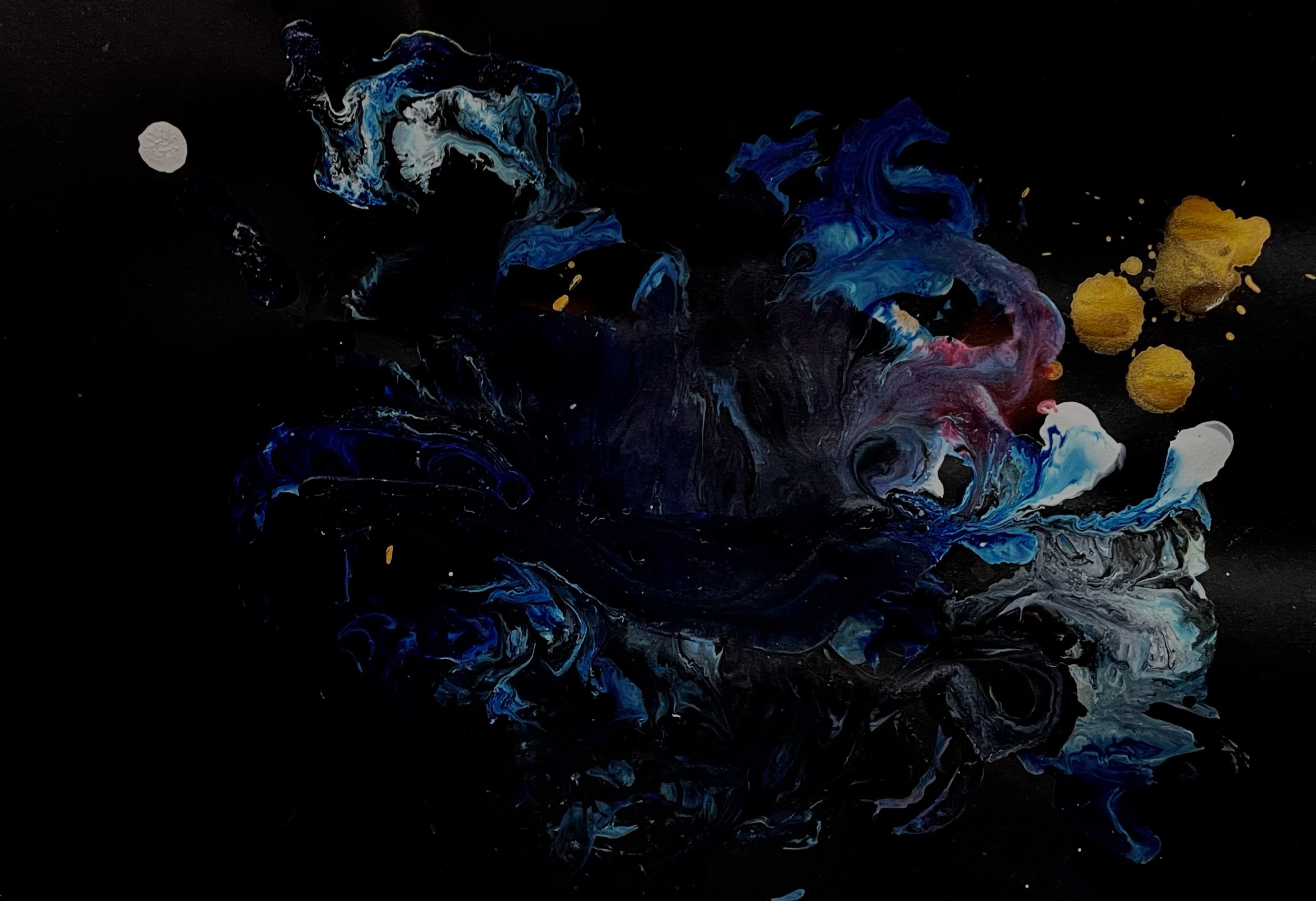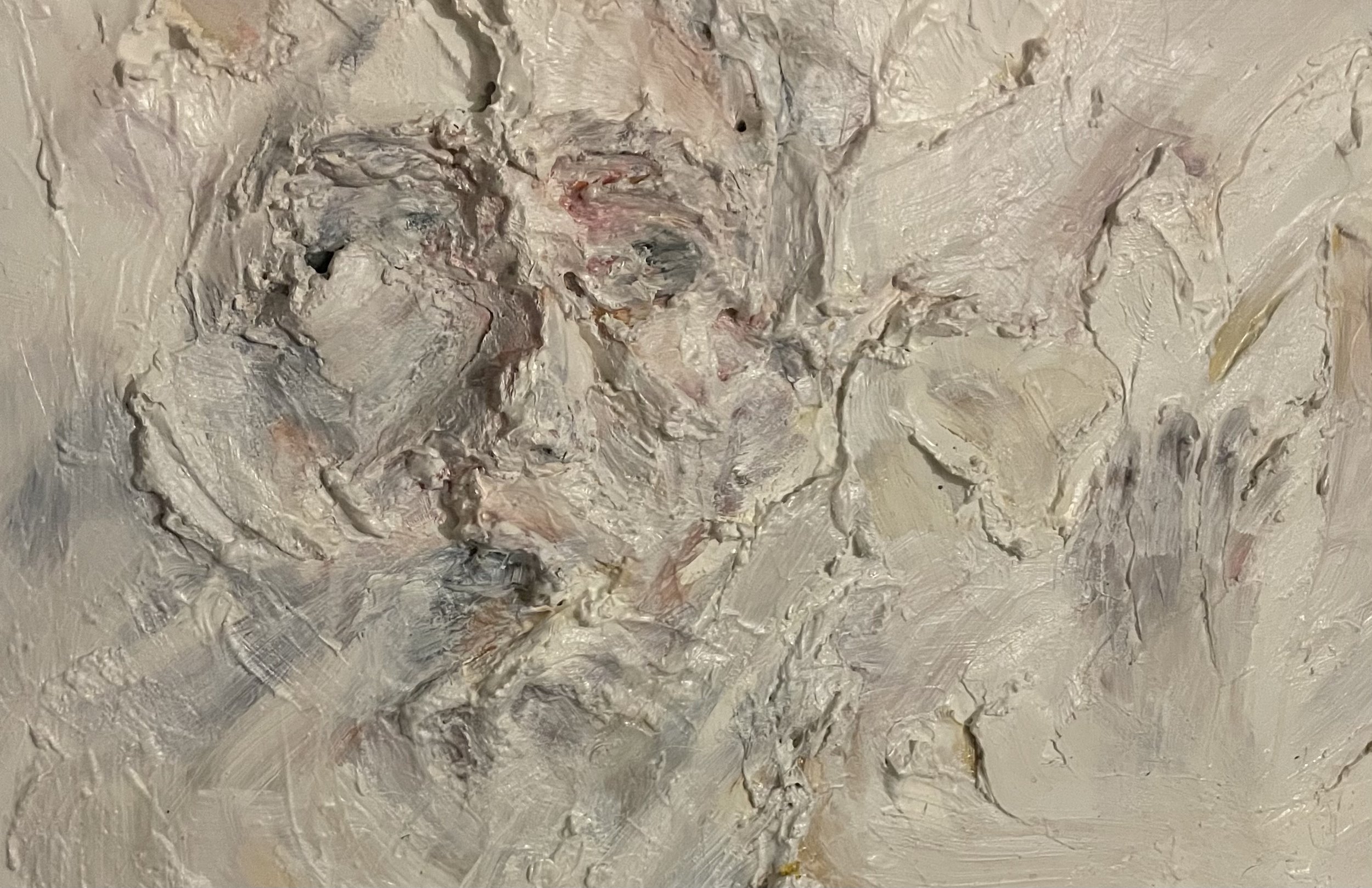What colour is a Ghost?
Ghosts in common media are commonly associated with the absence of colour. Even though I touch on this concept I wanted to explore the nuances of colours subconsciously associated with the subject.
50 Shades of Scotland.
Edinburgh based artist Emily Mackenzie uses words relating to her subject when picking each colour. This initially chaotic approach means that there is no regard to common hues or colour relationships when constructing a palette . I chose to look at famous poems regarding ghosts, grief and loss and made individual pallets in my sketchbook. From this I made a larger palette which I aimed to stick to throughout the project

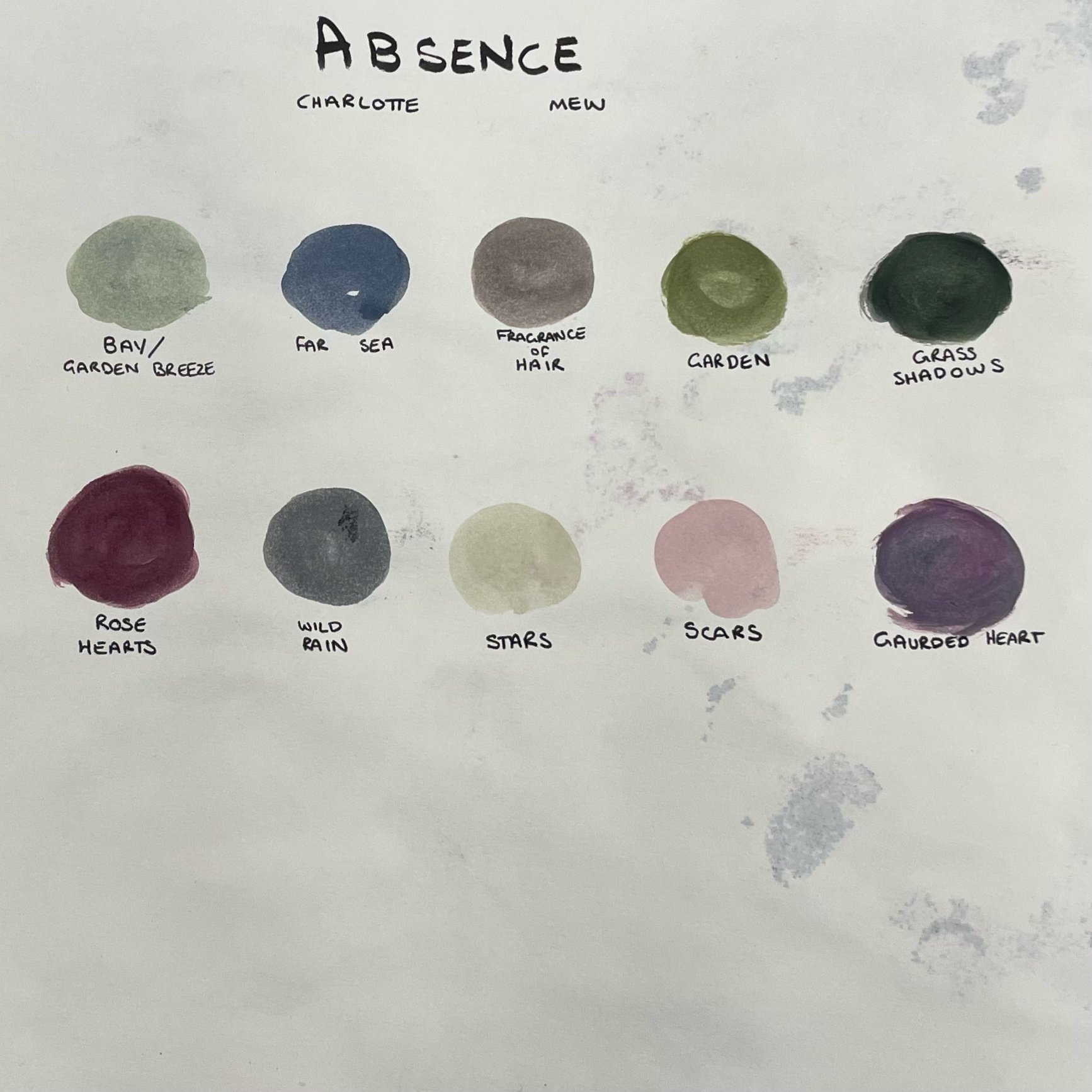
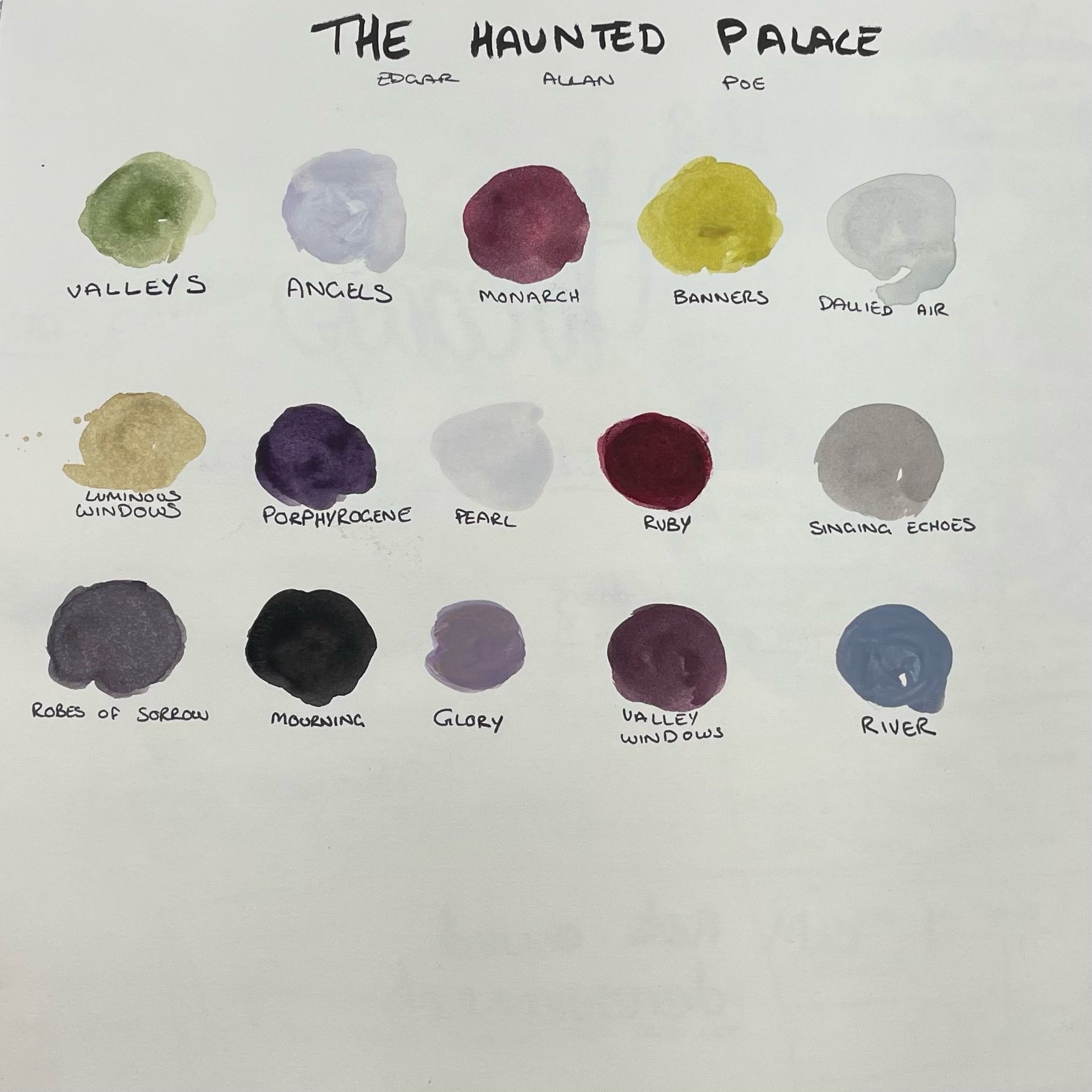

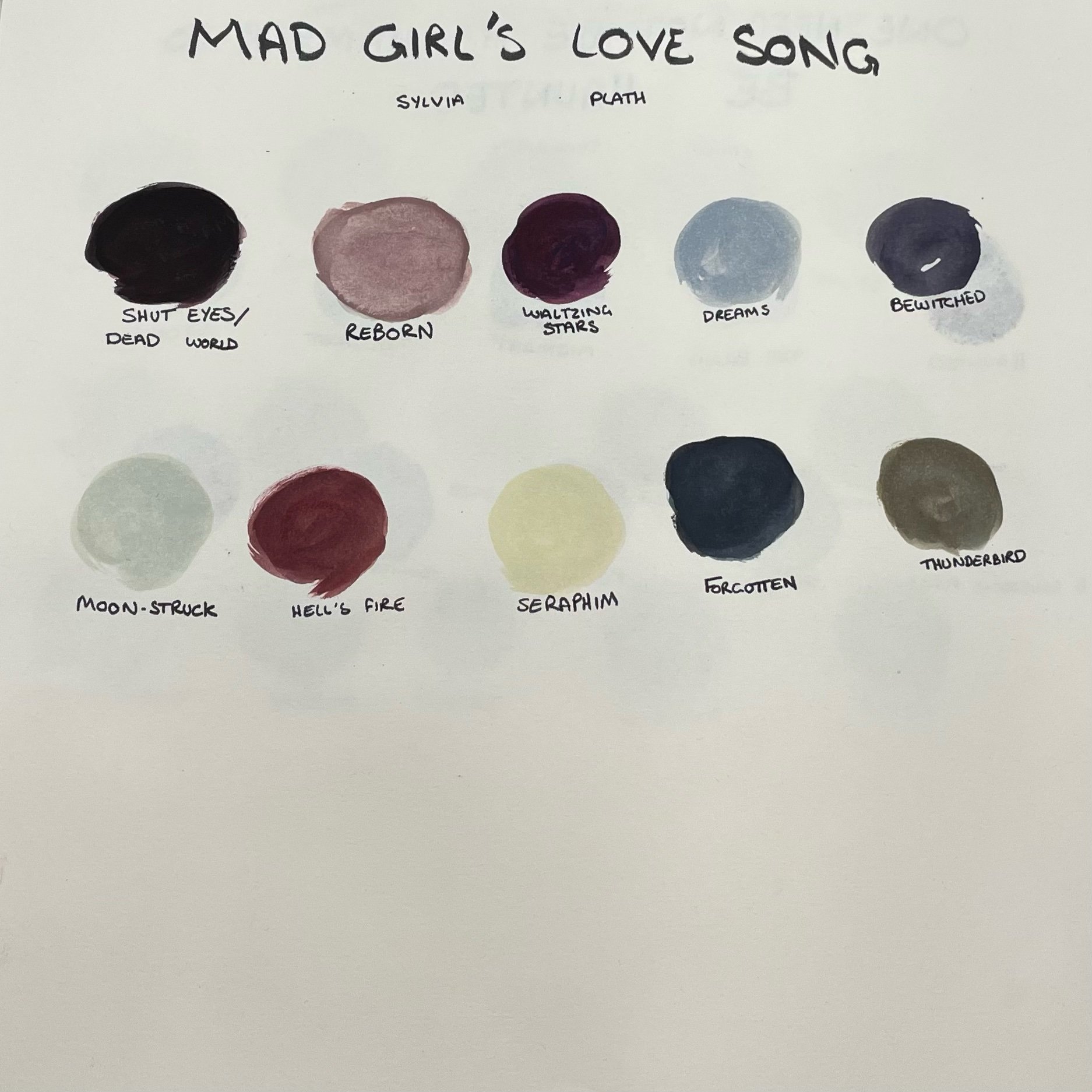
What is a ghost?
After research the topic I found some theories about what ghosts could logically be. One theory suggests that Pathological Grief and disruption to ingrained behaviours in your life such as the absence of someone close to you can trigger false sensations in your mind that there is a “presence” still there.
“A Letter to my Ghost” Wax based pencil and watercolour (A2)
- inspired by Jenny Saville
The other theory involves Electromagnetic (EM waves). When humans are exposed to certain frequencies it’s believed to affect the brain’s ability to interperet signals from sensory organs causing audio and visual hallucinations (i.e. seeing false specks of light and hearing odd tones). It may also debunk ghost hunters claim to fame as their EM detectors may be picking up actual EM signals instead of your Gran’s spirit :)
I was relatively limited in my ability to create art using EM waves so I did the next best thing and used regular magnets to create art by dragging metal objects along pieces of paper that have been splashed with inks and dragging a magnet along the underside. The act was extremely performative, as though the artwork is being made by a ghost itself (I show this off better in my short film later). I would love to explore this on a far grander scale.
The colours “die” once the paint has dried and itself becomes a Ghost of the process
Taking Inspiration from Mark Rothko
Rothko created atmosphere and emotion through colour and application of paint. He shows that sometimes to evoke a complex idea or concept requires creating non-traditional, abstract art.
Rothko mixed his own paints from powder pigments when creating his works and would build them up using lots of thinned layers. This meant that certain colours would bleed through .
For my work I also mixed my own oils from pigments and made the two panels on each side by layering multiple layers of white over layers of darker, more vibrant colours.
Felting Like Rothko
I wanted to experiment with Rothko’s layerings of semi-translucent colours in different mediums to see if a similar effect could be achieved.
Shown is multiple angles of a hand sized polystyrene ball, layered with thin layers of black, bright green, pink, yellow and red wool roving. Finally I unwound and broke down a ball of white wool to make the thin layer of white roving on the surface.
“The Curse of Lady MacBeth”
Felt roving sculpture on polystyrene board (1 x 1.5ft )
As this technique allowed me to play with physical form better than paint I was able to sculpt a hand by felting wool wool which I then attached to a base felt panel. Inspired by the curse from the play, I chose the symbol of the spot on the hand representing a haunting as another cultural form of supernatural manifestation.
“Is There Anybody There?”
Pollyfilla and oil paint on 80 x 40cm mdf
Once again I used the highly effective layering of paint method but this time to define and accentuate a highly textured, Khoshroo inspired surface.
I believe I successfully made a contradicting piece of art: undefined, ethereal and wispy in flat lighting (top image) and eerie, solid and pained in top down lighting (bottom).
I like this effect as the hidden portrait appears in and out of existence as the viewer’s perspective and environment changes making us question…
Is there Anybody there..?
“Conversations with a Ghost”
“Absence” is a painting that changed dramatically during the creation process as the final image wasn’t planned at all. I started by applying and removing colour to my initial charcoal drawing to suggest life and the absence thereof.
Much like the magnet art earlier, I felt this piece was more performative than traditional so I made the short film above creating a narrative highlighting the creation process.
“Absence” Mixed media (A1)
The final piece here was inspired by Charlotte Mew’s poem of the same name -
Absence
Sometimes I know the way
You walk, up over the bay;
It is a wind from that far sea
That blows the fragrance of your hair to me.
Or in this garden when the breeze
Touches my trees
To stir their dreaming shadows on the grass
I see you pass.
In sheltered beds, the heart of every rose
Serenely sleeps to-night. As shut as those
Your garded heart; as safe as they form the beat, beat
Of hooves that tread dropped roses in the street.
Turn never again
On these eyes blind with a wild rain
Your eyes; they were stars to me.-
There are things stars may not see.
But call, call, and though Christ stands
Still with scarred hands
Over my mouth, I must answer. So
I will come--He shall let me go!
-Charlotte Mary Mew



